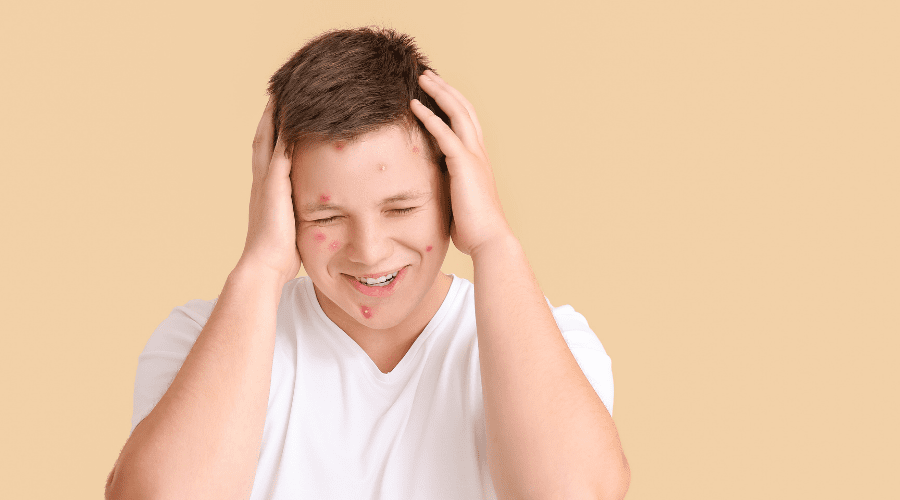Most people are familiar with acne, the condition that causes those unsightly whiteheads, blackheads, and pimples that regularly ruin high school experiences. But what is subclinical acne?
This more obscure condition shares its cause with standard acne but presents very differently. Instead of pimple and whiteheads, sufferers experience flesh-colored bumps across the surface of the skin. These non-inflammatory nodules, also called comedones, can develop into standard pimples but usually don’t with subclinical acne. Comedones are a form of superficial acne that reside just below the skin’s surface.
What Causes Subclinical Acne?
Like common acne, hair follicles plugged with oil and dead skin cells cause subclinical presentations. These blockages are generally due to inadequate hygiene, hormonal changes, poor diet, and pore-clogging makeup and skincare products. Stress can also trigger outbreaks, as can overwashing (which triggers increased oil production in the skin).
Thankfully, all of these causes, save hormones (sorry teenagers), are reversible. Bathing regularly and washing your face judiciously will help prevent oil buildup. Reducing dairy products and sugary processed foods can help with inflammatory issues in the body, as will reducing stress. Eliminating makeup and skincare products that cause adverse reactions will also help keep your skin healthy.
Over time these steps can reduce the frequency and severity of subclinical acne attacks. There are also several things you should do to treat existing outbreaks.

Treating and Preventing Subclinical Acne
Treating subclinical acne involves unclogging pores and hair follicles and preventing them from becoming plugged again. Following the steps below consistently will result in fewer breakouts and reduce or eliminate existing coverage.
1. Exfoliate Regularly
When dead skin cells are allowed to collect, they eventually mix with naturally-occurring oils, creating a breeding ground for bacteria. Exfoliating gets rid of these cells, speeding the reduction of existing comedones and preventing new ones.
Using a loofah or other abrasive scrubbers in the shower can help remove dead skin cells from the surface. In between, apply an exfoliating cream to help dissolve cells collecting inside pores.
2. Use a Cleanser Containing Salicylic Acid
The active ingredient in these cleansers, salicylic acid, is a mild, oil-soluble acid that penetrates deep into clogged pores to dry them out. It also helps to dissolve some of the skin cells trapped in the pores.
People with oily skin should favor higher concentrations of salicylic acid. Lower concentrations are more appropriate for people with dryer skin to avoid removing too much oil.
3. Clean With Benzoyl Peroxide as Well
Exfoliating removes dead skin cells, salicylic acid dries excess oil, and benzoyl peroxide attacks acnes bacteria, the third cause of subclinical acne. There are a number of good, over-the-counter benzoyl peroxide preparations with differing concentrations, depending on your needs.
4. Add a Retinoid Treatment
Skin cell turnover is the body’s way of using new skin cells to push dead ones to the surface. When this process is too slow, old cells can build up, causing acne. Retinoids normalize and speed this turnover, causing more dead cells to be ejected by the body more rapidly. Retinoid creams can’t treat existing breakouts but, used regularly, they can help prevent future occurrences.
Perform this four-step ritual consistently and you may never see another subclinical acne breakout again. Just be patient. It can take some time to get the balance of salicylic acid, benzoyl peroxide, and washing frequency right. Every person is different. Experiment until you find the right balance for you.

